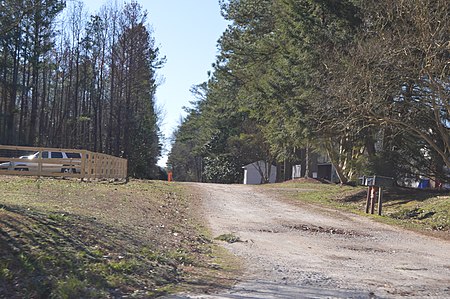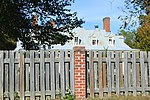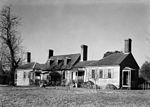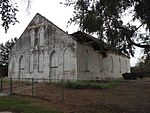Olive Hill (Matoaca, Virginia)
Central Virginia Registered Historic Place stubsGeorgian architecture in VirginiaHouses completed in 1802Houses in Chesterfield County, VirginiaHouses on the National Register of Historic Places in Virginia ... and 2 more
National Register of Historic Places in Chesterfield County, VirginiaPlantation houses in Virginia

Olive Hill is a historic plantation house located near Matoaca in Chesterfield County, Virginia. It was built in 1740, and is a two-story, five-bay-wide, white frame house in the Georgian style. The original structure measures 38 by 32 feet (11.6 by 9.8 m). It is sheathed in molded weatherboard and topped by a pedimented roof. The interior features a Chinese lattice stair with a molded hand rail.It was listed on the National Register of Historic Places in 1975.
Excerpt from the Wikipedia article Olive Hill (Matoaca, Virginia) (License: CC BY-SA 3.0, Authors, Images).Olive Hill (Matoaca, Virginia)
River Road,
Geographical coordinates (GPS) Address Nearby Places Show on map
Geographical coordinates (GPS)
| Latitude | Longitude |
|---|---|
| N 37.226111111111 ° | E -77.496666666667 ° |
Address
River Road 7301
23803
Virginia, United States
Open on Google Maps









